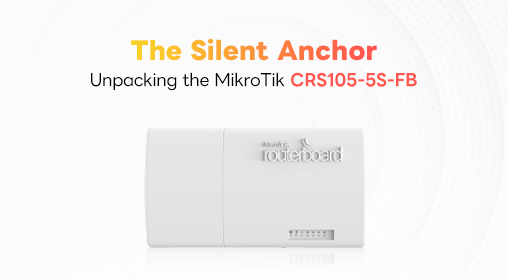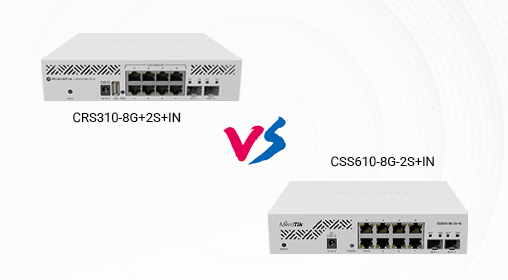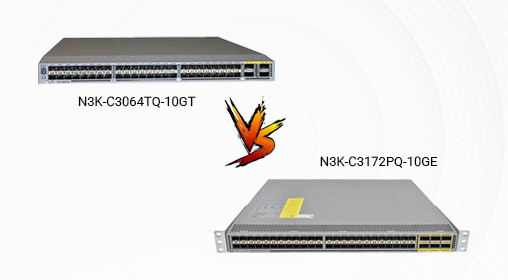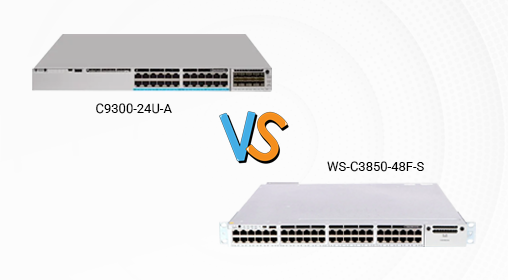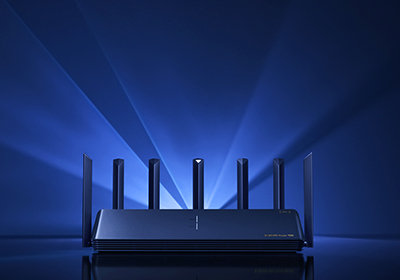














Choosing between MikroTik's CRS309-1G-8S+IN and the CRS312-4C+8XG-RM feels like selecting a specialist tool for a very specific job. One is a razor-focused instrument built for a single purpose, while the other is a broadsword designed to handle nearly anything you throw at it. The CRS309 is all about density, offering eight SFP+ cages in a minimalist package for those who need pure 10G connectivity. Meanwhile, the CRS312 is a mixed-port beast that doesn't just give you 10G capabilities but throws 25G into the mix, all wrapped in a rugged rack-mount chassis. They might seem similar on the surface, but their personalities couldn't be more different.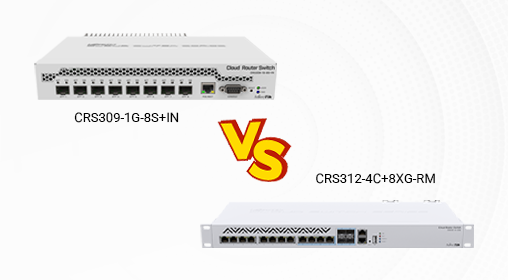
Unboxing these two units reveals their distinct philosophies immediately. The CRS309-1G-8S+IN surprises with its almost impossibly compact dimensions, fitting neatly into a single rack unit with a minimalist aesthetic that borders on industrial chic. It's the kind of switch you could easily overlook in a server rack, were it not for the eight distinctive SFP+ ports dominating its front panel. The single gigabit Ethernet port for management feels like an afterthought, which it essentially is. By contrast, the CRS312-4C+8XG-RM announces its presence with authority. This is a substantial piece of hardware with a robust metal enclosure designed for permanent rack installation. The front panel is a symphony of connectivity options—four combo ports that can handle either SFP28 or SFP+ modules, alongside eight 10GBASE-T RJ45 ports that bring a level of copper convenience the CRS309 simply can't match. Where the CRS309 is sleek and specialized, the CRS312 is unapologetically utilitarian, built for environments where versatility matters more than elegance.
Core Technical Specifications
|
Parameter |
CRS309-1G-8S+IN |
CRS312-4C+8XG-RM |
|---|---|---|
|
Form Factor |
1RU |
1RU |
|
10G SFP+ Ports |
8 |
8 (RJ45) + 4 (SFP28/SFP+ combo) |
|
SFP28 Ports (25G) |
0 |
4 |
|
Gigabit Ethernet Ports |
1 |
0 |
|
Switching Capacity |
20 Gbps |
32 Gbps |
|
CPU |
98DX3236 |
98DX3236 |
|
RAM |
64 MB |
64 MB |
|
Storage |
16 MB |
16 MB |
|
Power Consumption |
~13W |
~28W |
|
Cooling |
Passive with optional fan |
Active (dual fans) |
|
Operating System |
RouterOS / SwitchOS |
RouterOS / SwitchOS |
Performance characteristics diverge significantly once you move beyond basic specifications. The CRS309 operates with an almost silent efficiency in well-cooled environments, its passive cooling system keeping noise levels to an absolute minimum. However, push it hard in a warm environment, and you might find yourself needing the optional active cooling accessory to prevent thermal throttling. The CRS312 takes the opposite approach with its dual-fan cooling system that ensures consistent performance under load, though it does so at the cost of some audible presence. Where the CRS309 truly shines is in its laser-focused design for 10G SFP+ connectivity, making it perfect for linking servers or creating a compact 10G backbone between switches. The CRS312, with its combination of 10GBASE-T copper ports and SFP28-capable combo ports, offers remarkable flexibility. Need to connect a mix of workstations, servers, and storage with varying interface requirements? The CRS312 handles this with ease, though its higher power consumption reflects its more capable nature.
The user experience with these switches varies dramatically based on your technical comfort level and specific needs. Deploying the CRS309 feels straightforward if you're familiar with SFP+ modules and fiber optic cabling. There's a purity to its operation that advanced users appreciate—it does one thing extremely well without complications. The CRS312 demands more initial configuration to navigate its mixed-port environment, but rewards you with far greater deployment flexibility. Being able to use standard Cat6a cabling for 10G connections to workstations while maintaining high-speed fiber uplinks makes it incredibly practical for heterogeneous environments. Both devices run MikroTik's powerful RouterOS, but the learning curve remains substantial for newcomers. The CRS309's simplicity makes it slightly more approachable for those new to the platform, while the CRS312's additional capabilities mean more menu diving and configuration complexity to master.
When it comes to value proposition, the calculation depends entirely on your port requirements and future plans. The CRS309 delivers exceptional value per SFP+ port for anyone needing pure 10G fiber connectivity. It's the obvious choice for homelabs, small server clusters, or as a top-of-rack switch in an all-SFP+ environment. The CRS312 commands a higher price but justifies it through incredible versatility. Those eight 10GBASE-T ports eliminate the need for transceivers when connecting compatible devices, which can actually reduce total cost in mixed environments. More importantly, the four SFP28 ports provide a clear upgrade path to 25G connectivity, future-proofing your investment in a way the CRS309 simply cannot match. For growing businesses or environments anticipating increased bandwidth demands, the CRS312's premium becomes much easier to swallow.
Reliability and stability showcase another interesting divergence. The CRS309's minimalist design and passive cooling approach (in appropriate environments) mean fewer moving parts to fail, contributing to excellent long-term reliability. The CRS312, with its more robust power delivery and active thermal management, is built to handle sustained heavy loads without breaking a sweat. MikroTik's ongoing firmware support for both platforms ensures that stability improvements and security updates continue to enhance their operational maturity. The CRS312 does benefit from being a more recent design in the product cycle, incorporating lessons learned from earlier models like the CRS309.
Each switch serves a distinct purpose with clear strengths and limitations. The CRS309-1G-8S+IN excels in scenarios where 10G SFP+ density in a compact form factor is the primary requirement. Its limitations become apparent when you need copper connectivity or future upgrade paths to higher speeds. The CRS312-4C+8XG-RM thrives in mixed environments where flexibility and future-proofing are paramount. Its constraints include higher power consumption and greater physical bulk alongside the more complex configuration required to leverage its full capabilities.
There's no universal winner in this comparison—only the right tool for your specific network environment. The CRS309 is the precision instrument for the connoisseur who values simplicity and efficiency above all else. The CRS312 is the versatile workhorse ready to adapt to whatever connectivity challenges your network presents. Your current needs, future growth plans, and technical comfort level will ultimately determine which of these capable switches belongs in your rack.
